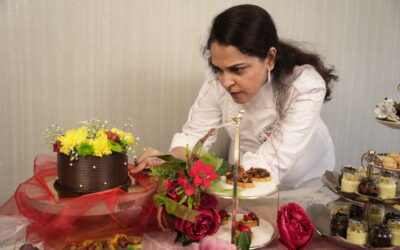Chef Made Tonygita Rahma Wicaksana, known as Chef Tony was born and raised in Bali, a place deeply infused with its rich cultural and spiritual values. Growing up in an artistic environment, with his grandfather and father both being traditional Balinese percussionists,an artistic bloodline significantly influences his culinary creations. He embarked on his professional kitchen journey 13 years ago after graduating from the Bali Tourism School in Nusa Dua. He has served as the Executive Sous Chef at the Wyndham Dreamland Uluwatu. He was offered the role of Executive Chef for the first time at the age of just under 27, leading the kitchen of a 5-star resort in Nusa Dua, making him the youngest Executive Chef of a 5-star hotel and resort in Bali at that time.
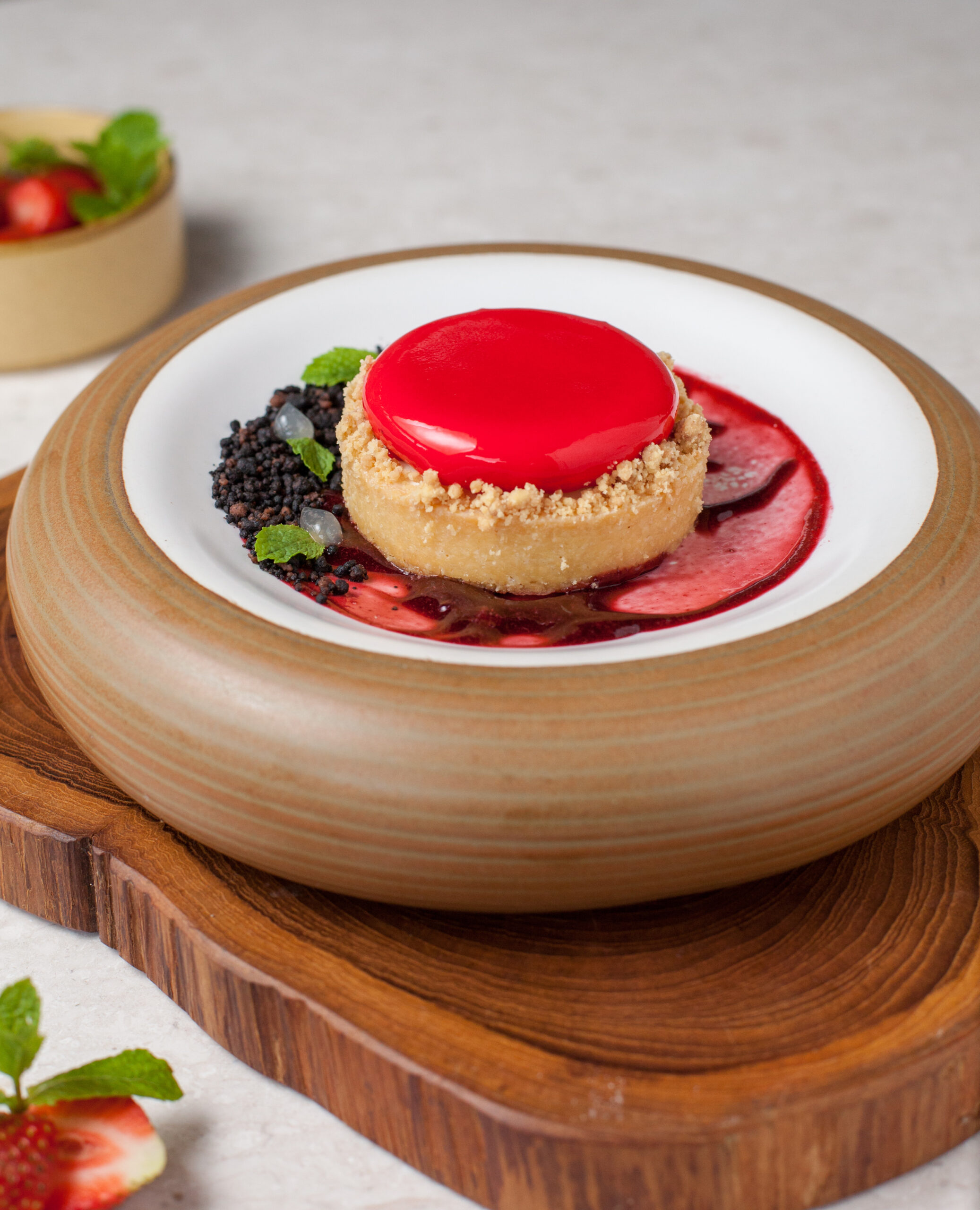
Red-Berry-Cheese-Cake
Later, he transitioned to hotels and resorts in the Ubud area and now Chef Tony holds the position of a Corporate Executive Chef at Omma Bali. Being a chef at a relatively young age is no easy feat. It’s not just about cooking skills or menu knowledge, it’s about orchestrating one or even more kitchens to operate seamlessly. This talented chef takes great joy in using local source ingredients, aspiring to showcase the wisdom of Indonesian cuisine to the international culinary scene. With all the experience he has gained, he brought this concept to life at OMMA BALI, which happens to share the same outlook concepts on nature, culture, and sustainability. Nearly all types of local source ingredients such as seafood, meat, poultry, vegetables, fruits, and, of course, herbs are incorporated into developing menus at OMMA BALI. With this concept, his hope is that visitors can enjoy a culinary experience like never before, spreading the flavors of his creations to various corners of the world.
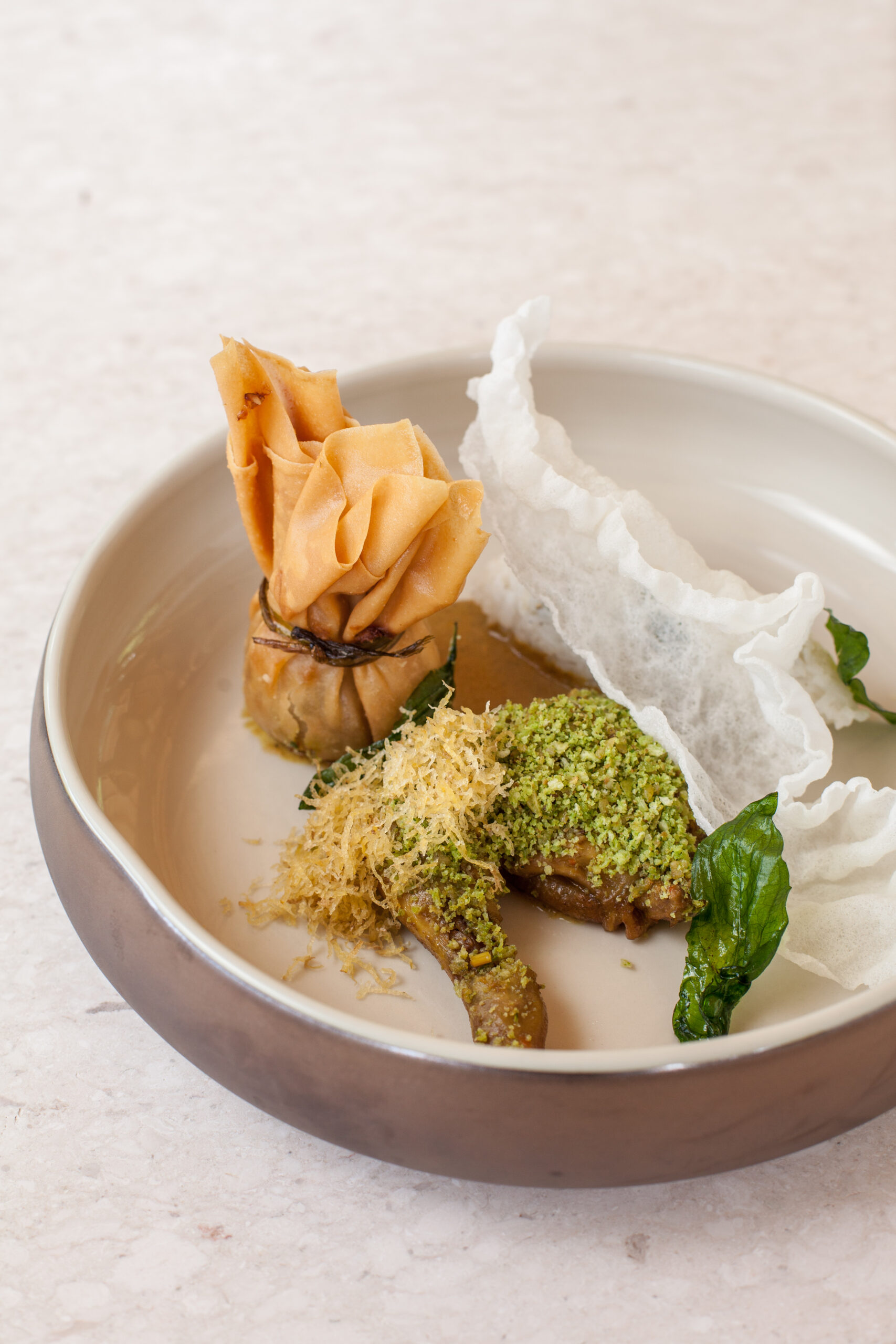
Ayam Betutu
Do you have a favorite time of the year or set of ingredients that you look forward to working with?
We are in a tropical country where a majority of resources are available throughout the year, and I love to use mostly local ingredients in my dishes. One local ingredient that I particularly love for its distinctive character is tabie bun (long pepper). When I develop my menu, I experiment with mixing and matching this ingredient to bring out a unique flavor, in order to give my dishes a distinct herbs character.
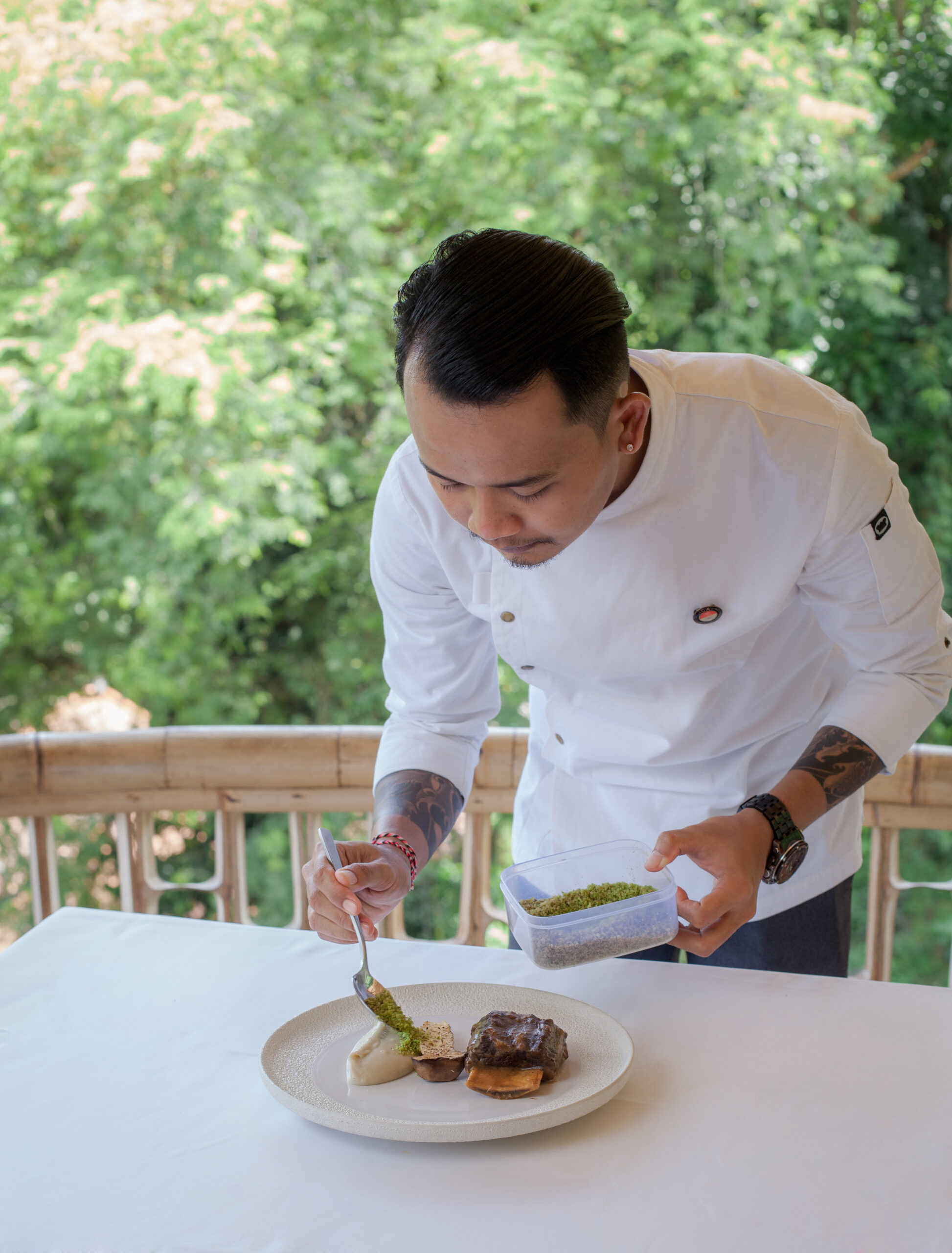
What would you do if you weren’t a chef?
It may sound a bit naive, but this is a true story. Becoming a chef wasn’t my lifelong ambition. Back in high school, I had a strong affinity for human anatomy and biology. If I hadn’t pursued a career in the culinary arts, I might have ended up as a specialist in orthopedics. Surprisingly, my knowledge of biology and chemistry has proven invaluable in my current role as a chef, as it is closely related to understanding the inherent characteristics of ingredients and maintaining hygiene and sanitation standards.
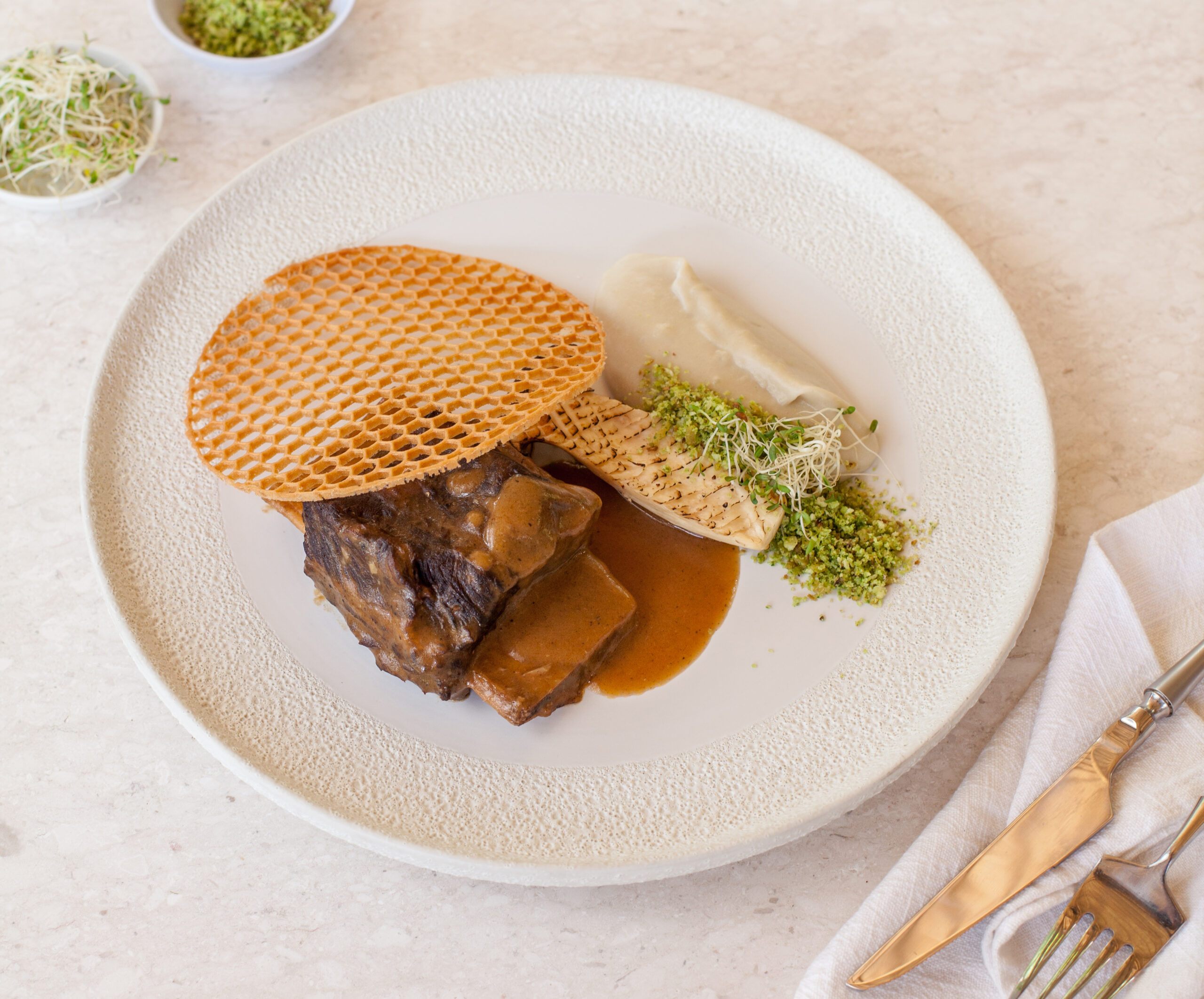
Braised-Short-Ribs-Suna-Cekuh
Do your personal preferences influence the menu at all?
Yes, it certainly influences the character of the menus I create. Essentially, I craft dishes that I find delicious based on my personal experiences throughout my culinary career journey. However, I always take into consideration the market demand to ensure acceptance by customers and to be beneficial for the business. Idealism in this context must be weighed, as being a
chef is closely tied to the world of art, yet we must also consider it from a business perspective.
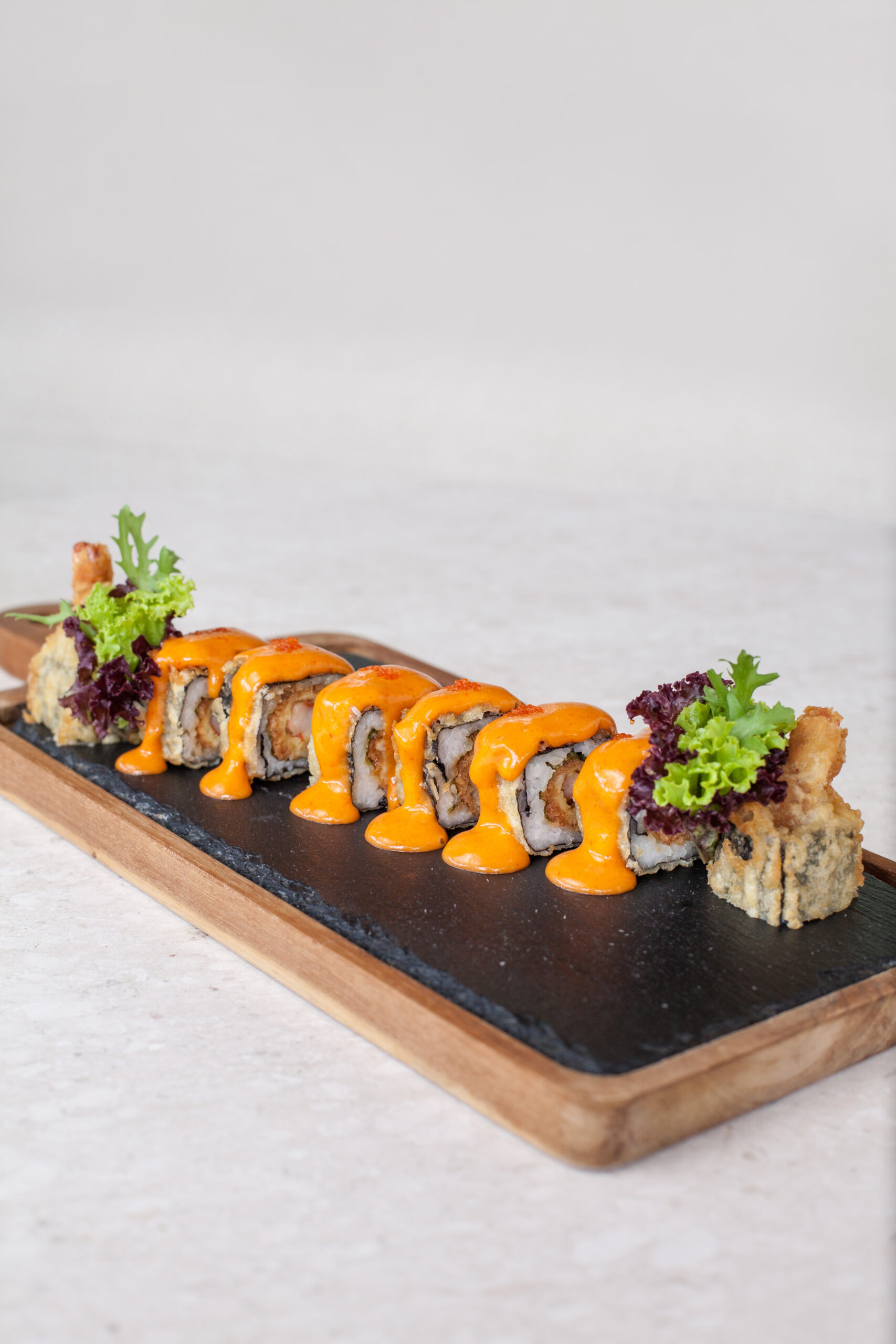
Prawn-Katsu-Roll
What do you think is the most over-hyped food trend currently?
I believe that nowadays people focus on creating visually stunning dishes using hard-to-find ingredients. Some may even re-shape a dish to the point where it loses its identity and authentic flavor. In my opinion, innovation is good, but improvisation like this shouldn’t go too far, as we risk losing the authenticity of traditional dishes that we should preserve. This is closely tied to food sustainability and the local farmers who provide these ingredients. Striking a balance is crucial to ensure that we appreciate and maintain the essence of our traditional cuisine.
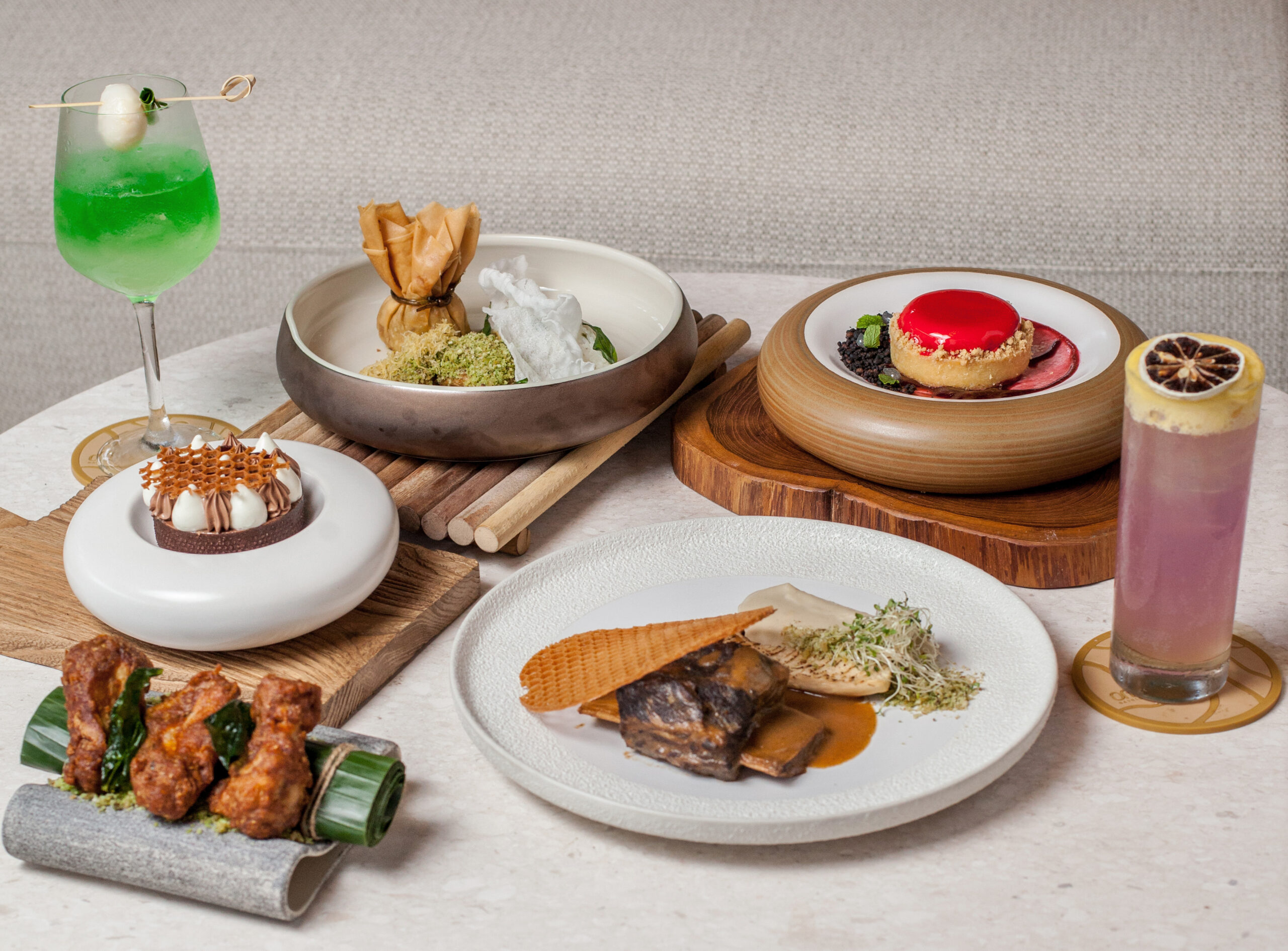
When are you happiest?
I find joy in knowing that what I do can bring happiness to others, and of course, I must also find joy in the process. In the kitchen, I feel content when my presence and organizational skills contribute to the overall comfort of the entire team. This comfort significantly influences the quality of the food presented to our guests. Maintaining mutual respect is a key principle I always uphold in a professional kitchen. When we earn respect from the team, it becomes easier to delegate tasks and work together towards common goals. Ultimately, ensuring that customers receive food that meets their expectations, making them happy.
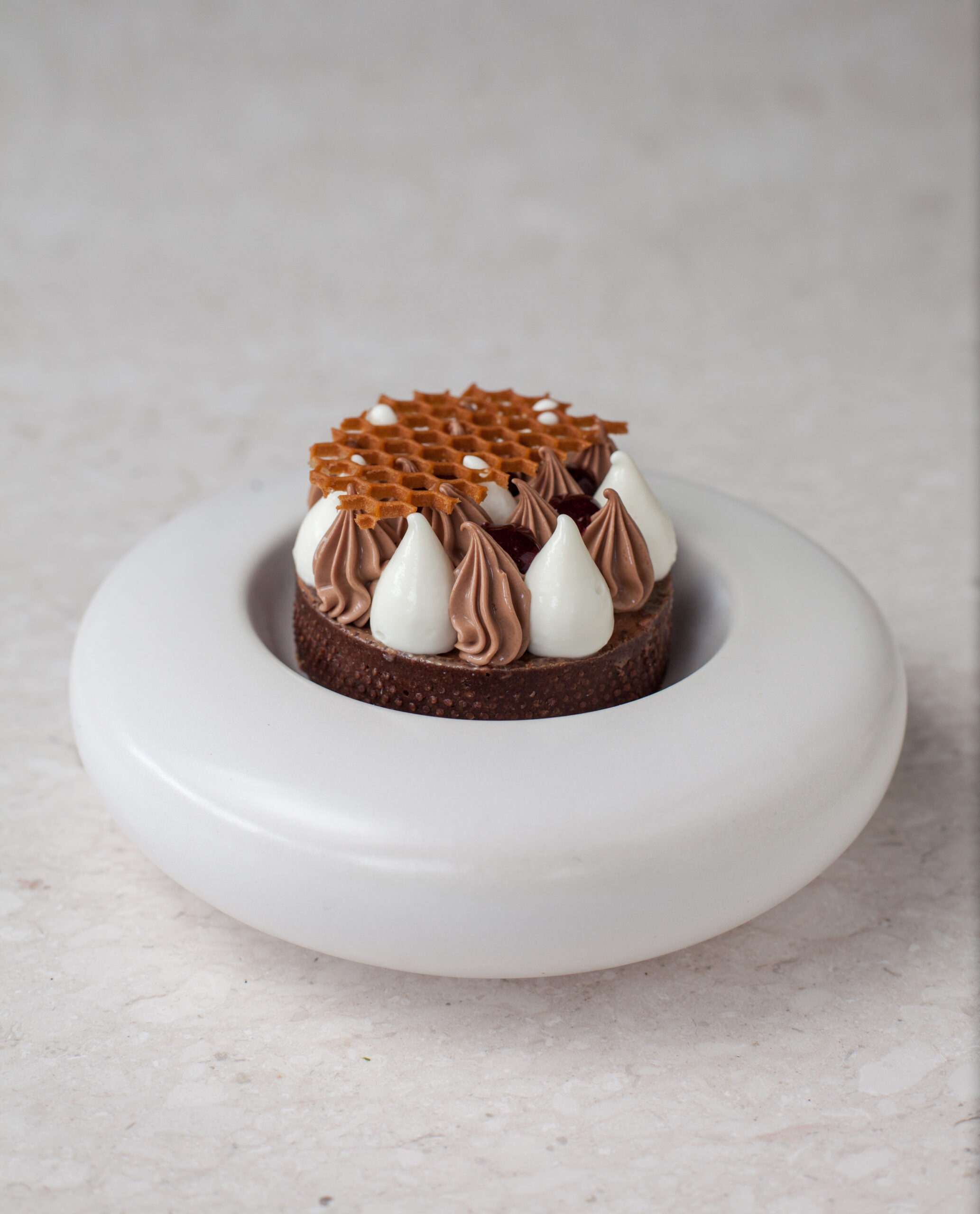
The Monochrome
When you’re not in the kitchen where can you be found?
I’ll be positioned all around the venue to greet and engage in conversations with everyone, whether they are guests or employees. I take pleasure in talking to a diverse range of people, not only because it’s part of our role in the hospitality industry, but also because through these conversations, we can gather valuable information. Perhaps someone might share new ideas that can contribute to our continuous improvement in menu development for the future.
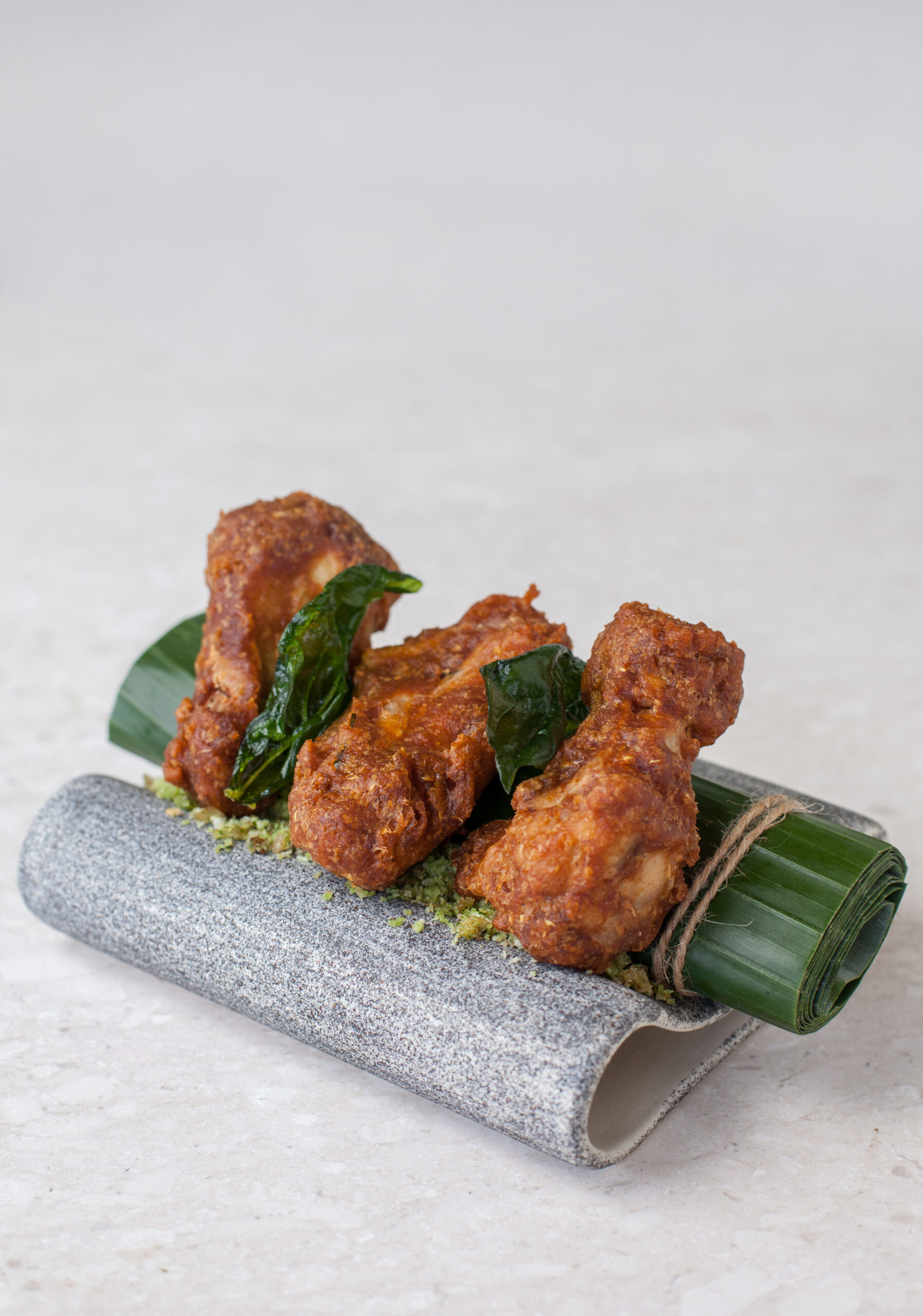
Chicken-Borneo
Where is your favorite place to dine?
At home, the dinners prepared by my parents have always been the highlight of my day. Regardless of the menu I create in the kitchen, it’s inevitably influenced by my fond memories of the home-cooked meals. My father, being a traditional Balinese percussionist and a skilled cook in his own right, has imparted a wealth of knowledge to me about local ingredients and traditional cooking techniques. His expertise has been a significant influence on my culinary journey.
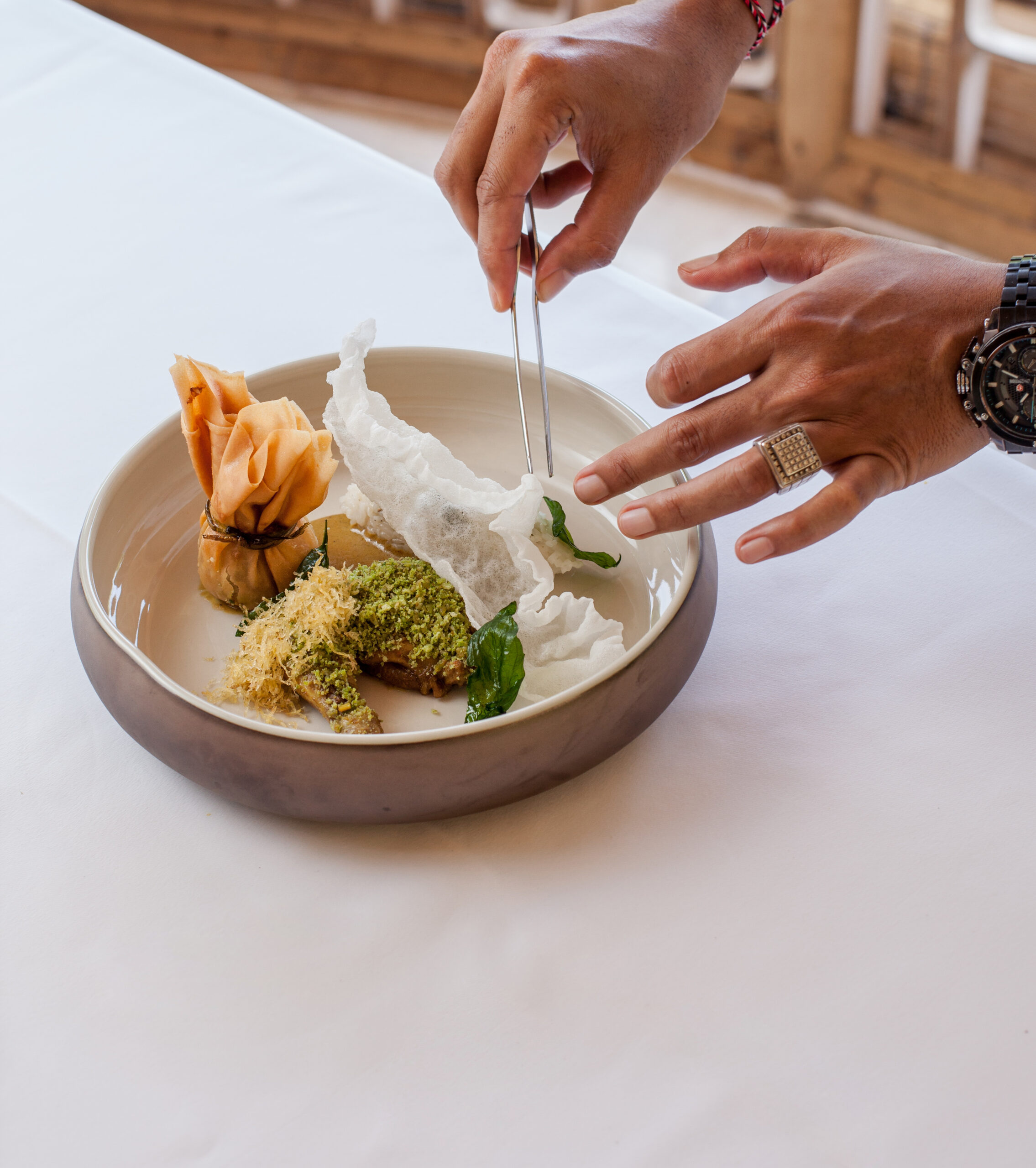
What’s your favourite takeaway or comfort food?
I have a strong affinity for Nusantara cuisine, particularly at Warung Nasi Lawar and Rumah Makan Padang. These two types of eateries are my frequent stops throughout the week. Aside from the delicious food they offer, they also evoke memories of my childhood when my father used to take me on food adventures, exploring different places just to savor the diverse flavors
of our local cuisine.
What makes the local food scene so exciting?
This always keeps me curious, Indonesian local cuisine is incredibly diverse and each dish has its unique characteristics. There’s no specific standard guide for crafting these foods, it’s all about intuition and understanding the inherent nature of the ingredients. While many have tried to extract recipes from traditional dishes and establish standards, it doesn’t always guarantee that you will get the authentic taste. When dealing with local ingredients, first we must comprehend the maturity level and character of the chosen ingredients for food processing. Therefore, not all traditional local recipes can be measured in grams; a chef still relies on intuition to bring out the true essence of the dish.
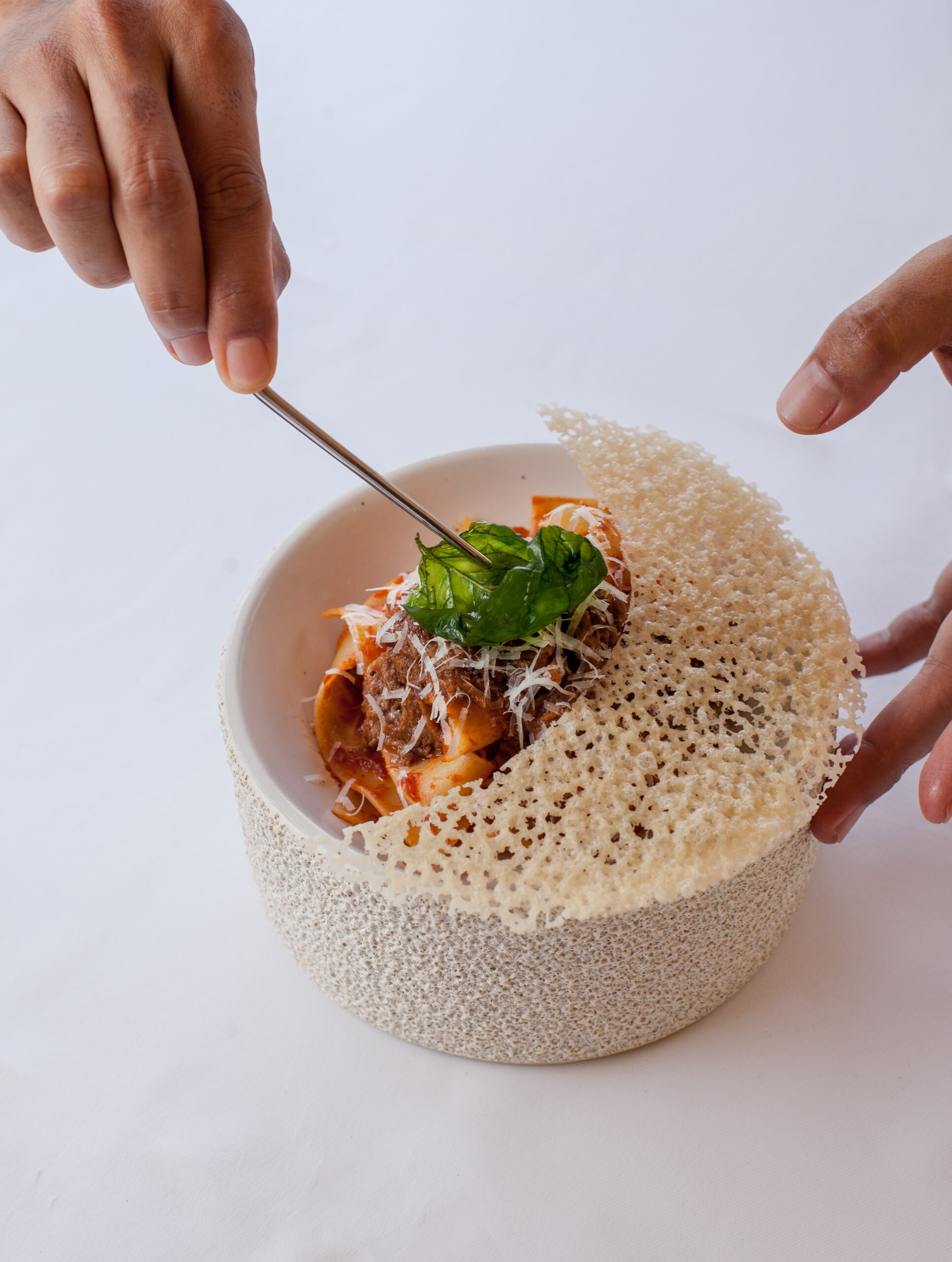
Lamb Parpadele
Which is the dish you’ve created that you are most proud of and why?
Braised short ribs suna cekuh. I drew inspiration for this dish during a visit to my in-laws’ home, where they prepared traditional food seasoned with suna cekuh (based on garlic and aromatic ginger). It immediately occurred to me that these flavors would pair exceptionally well with beef jus. To make it more accessible to foreigners, I decided to incorporate it into Braised Short Ribs. For me, it’s not just about integrating local spice techniques into Western cuisine, it’s also about creating a memorable and homely impression.
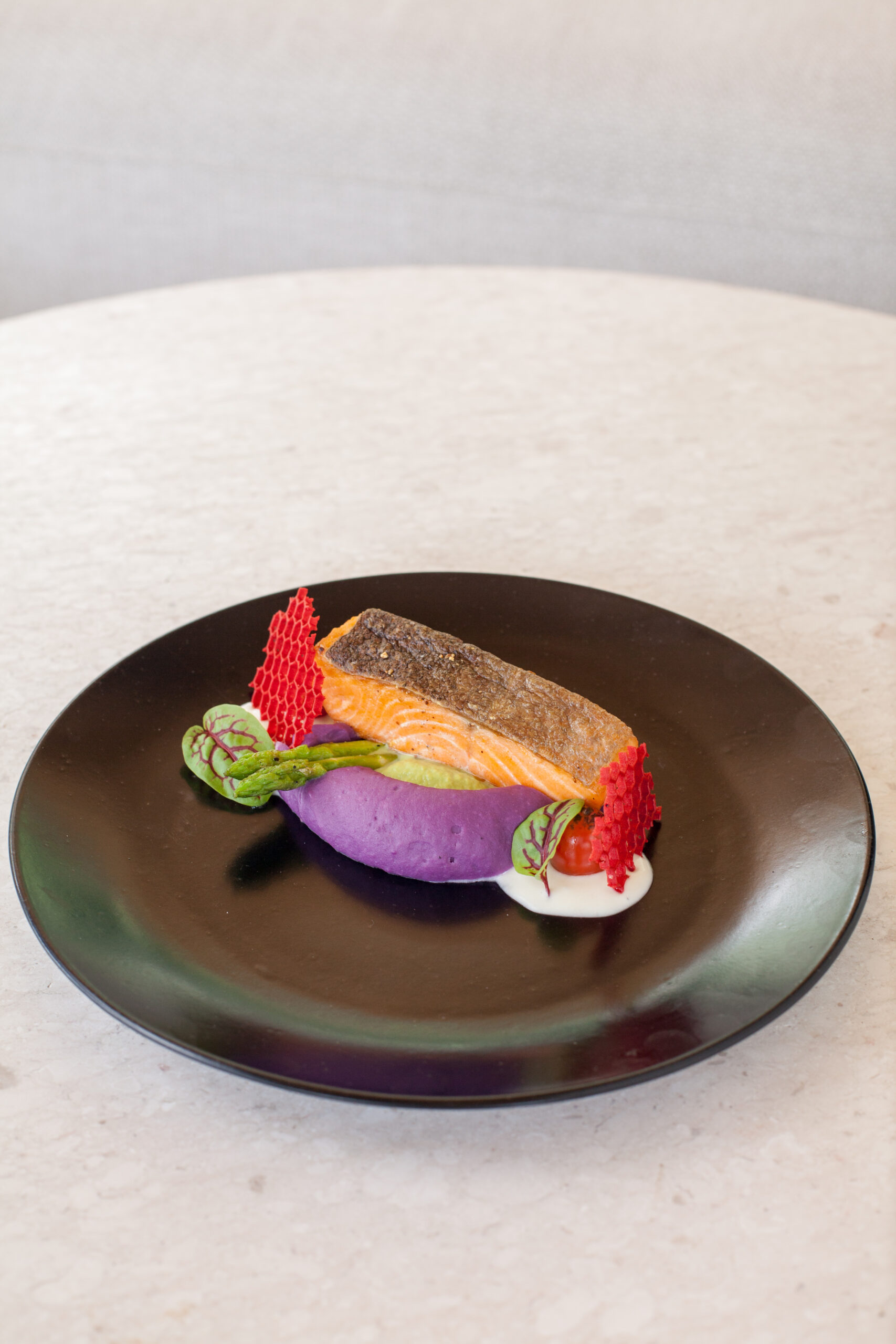
Tasmanaian-Salmon
You’re having friends over for dinner tonight. What’s on the table?
Sate Babi Ketumbar, Ayam Kare Rempah, and Nasi Daun Jeruk. I believe they would thoroughly enjoy these dishes. Each of these meals reflects the diverse flavors of the archipelago. You can savor the rich tapestry of Indonesian cuisine, journeying seamlessly from west to east at a single dining table.
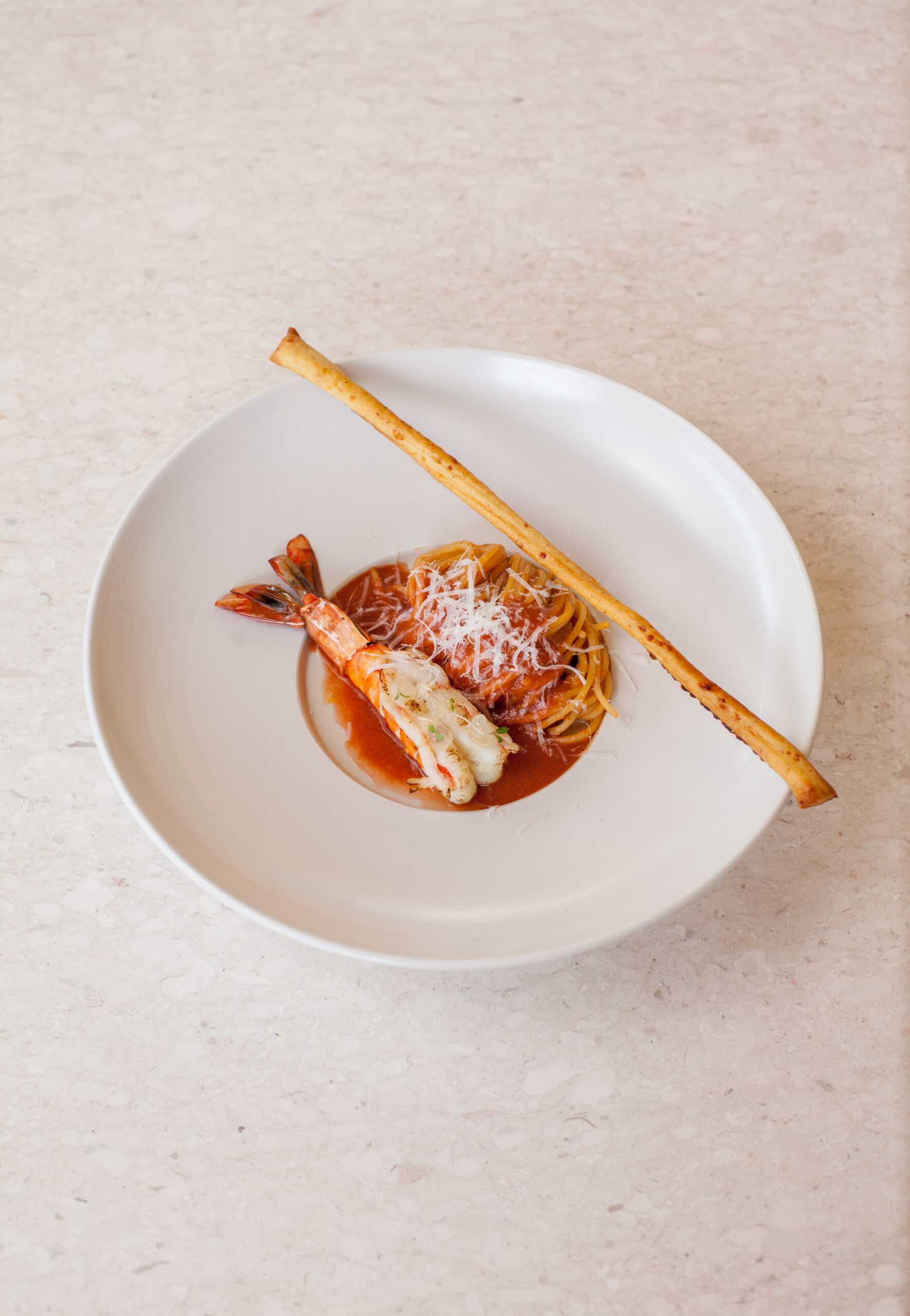
Prawn-Sauce-Pasta
Name your favourite city that has it all: food, culture, and nightlife.
Yogyakarta is the best place to discover local street food with a serene and comfortable nightlife. It’s not just about the food, the people there can make you feel like you’re at your grandmother’s home. I could stay there for days without getting bored because there’s always something new to explore. They has so much variety of traditional cuisine and cooking technique and I learned a lot from this place.
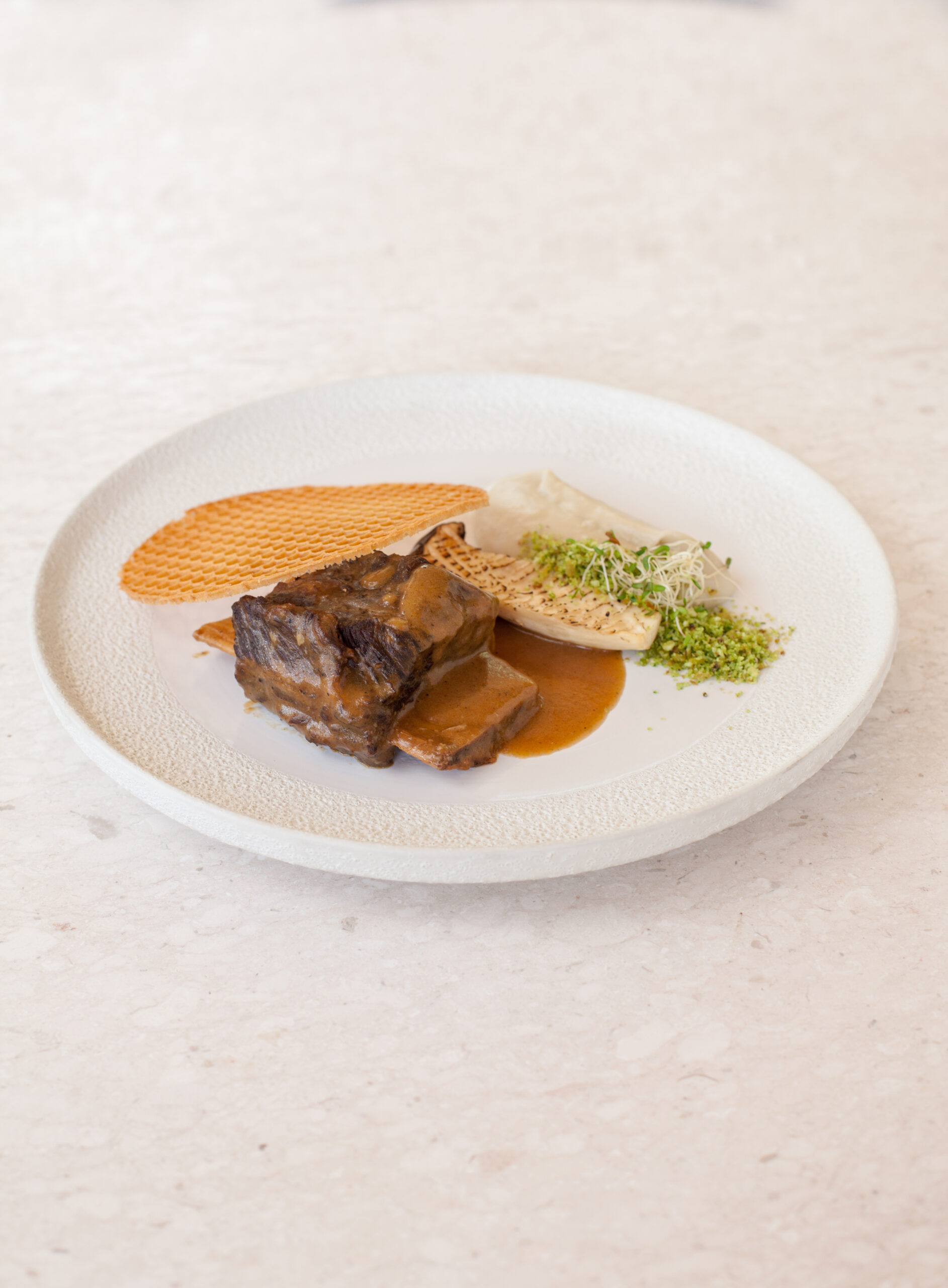
Braised-Short-Ribs-Suna-Cekuh
Can you tell us more about the cuisine at your restaurants?
At OMMA Dayclub, our culinary offerings are a delightful fusion of Western and Nusantara flavors, creating a unique and exciting dining experience. We go beyond simply serving delicious food, each dish tells a story of Indonesia’s rich culinary heritage. From Western inspired twists to locally inspired tastes, our menu is carefully crafted to provide a diverse range of flavors that appeal to both locals and international guests. What sets OMMA Dayclub apart is not only the exceptional taste but also the immersive dining experience. The ambiance of our venue, with the breathtaking backdrop of waterfalls and rivers, adds an extra layer of enjoyment to your meal. We believe in showcasing the beauty of Nusantara cuisine to a global audience, contributing not only to the culinary world but also supporting local farmers and sustaining our precious ecosystems. From sunlit days to lively evenings, OMMA Dayclub is the perfect destination to indulge in delectable dishes while enjoying the stunning natural surroundings.
ACEH GRILLED FISH CURRY
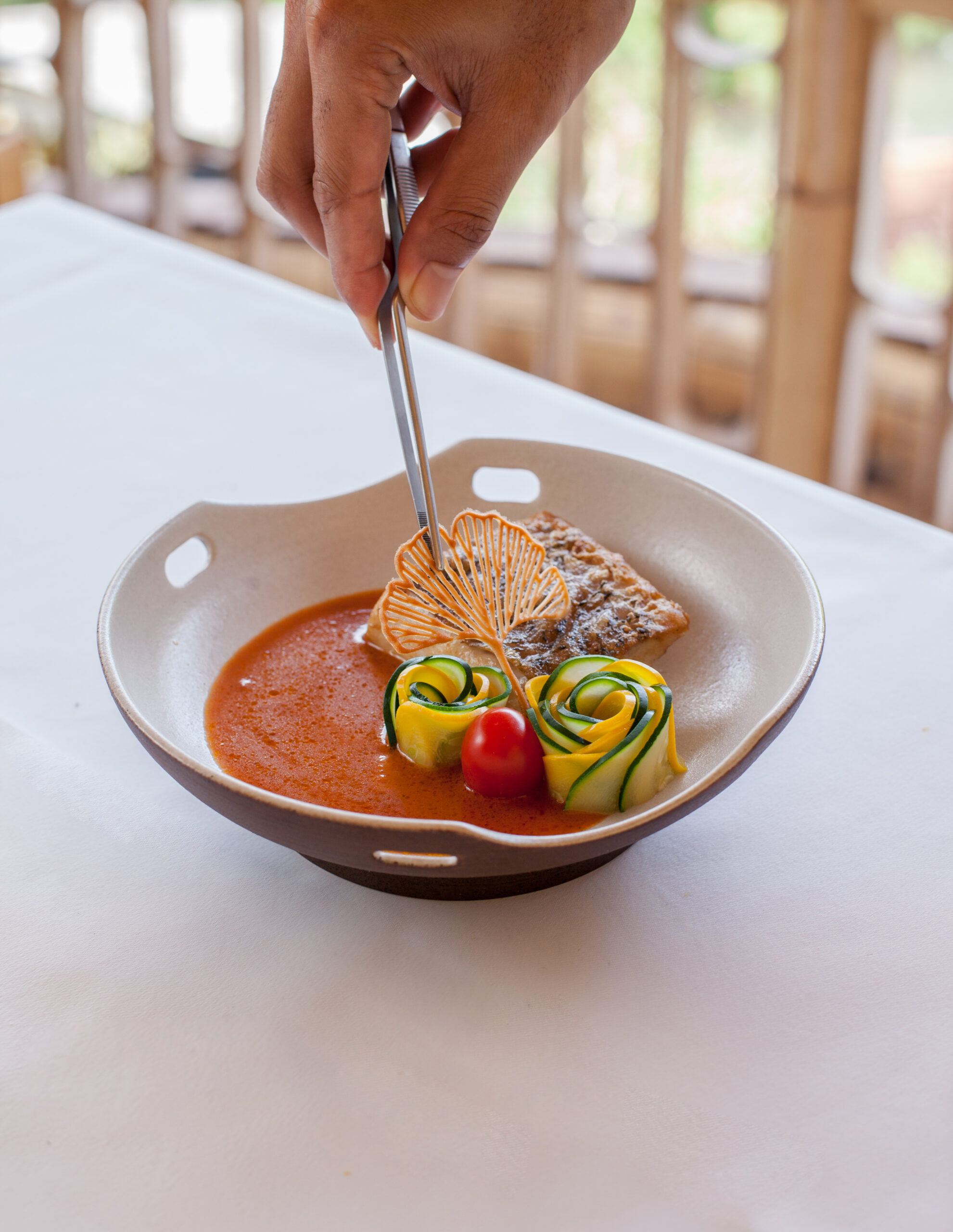
Ingredients A:
- 15 gr Coriander Seed
- 4 gr Cumin
- 5 gr Cardamon
- 2 gr Clove
- 2 gr Star anise
Method A:
In a blender mix all ingredients and grind all until become a powder.
Ingredients B:
- 450 gr Red Chili
- 70 gr Galangal
- 45 gr Ginger
- 15 gr Turmeric
- 85 gr Garlic
- 250 gr Shallot
- 8 gr Kafir lime leaf
- 5 gr Shrimp paste
- 300 ml Cooking Oil
Method B:
1. In a blender mix all ingredients and grind all until become a paste
2. Bring the paste to the sauce pan and sauté until fragrant and the oil come to surface.
Ingredients C:
- 200 gr Fillet Barramundi Fish
- 2500 ml Fresh Coconut Milk
- 25 gr Salt
- 30 gr White Sugar
- 30 gr Palm Sugar
- 3 pcs Kafir Lime Leaf
- 1 pcs Lemongrass
Method C:
1. Marinate the Fish with simple salt, pepper and lime juice than pan seared the Barramundi fish both side until nice golden brown and crispy skin.
2. In a medium sauce pot bring boil the Coconut milk, Ingredients A, Ingredients B and the rest of ingredients C mix together and simmer about 40 minutes until all the spices taste come out and fragrant.
3. Strain the Curry sauce with a fine strainer and then the curry sauce is ready to use.
4. Serve your Fillet Barramundi Fish with Curry Sauce and you can add it with another vegetable such as Zucchini and Asparagus.






